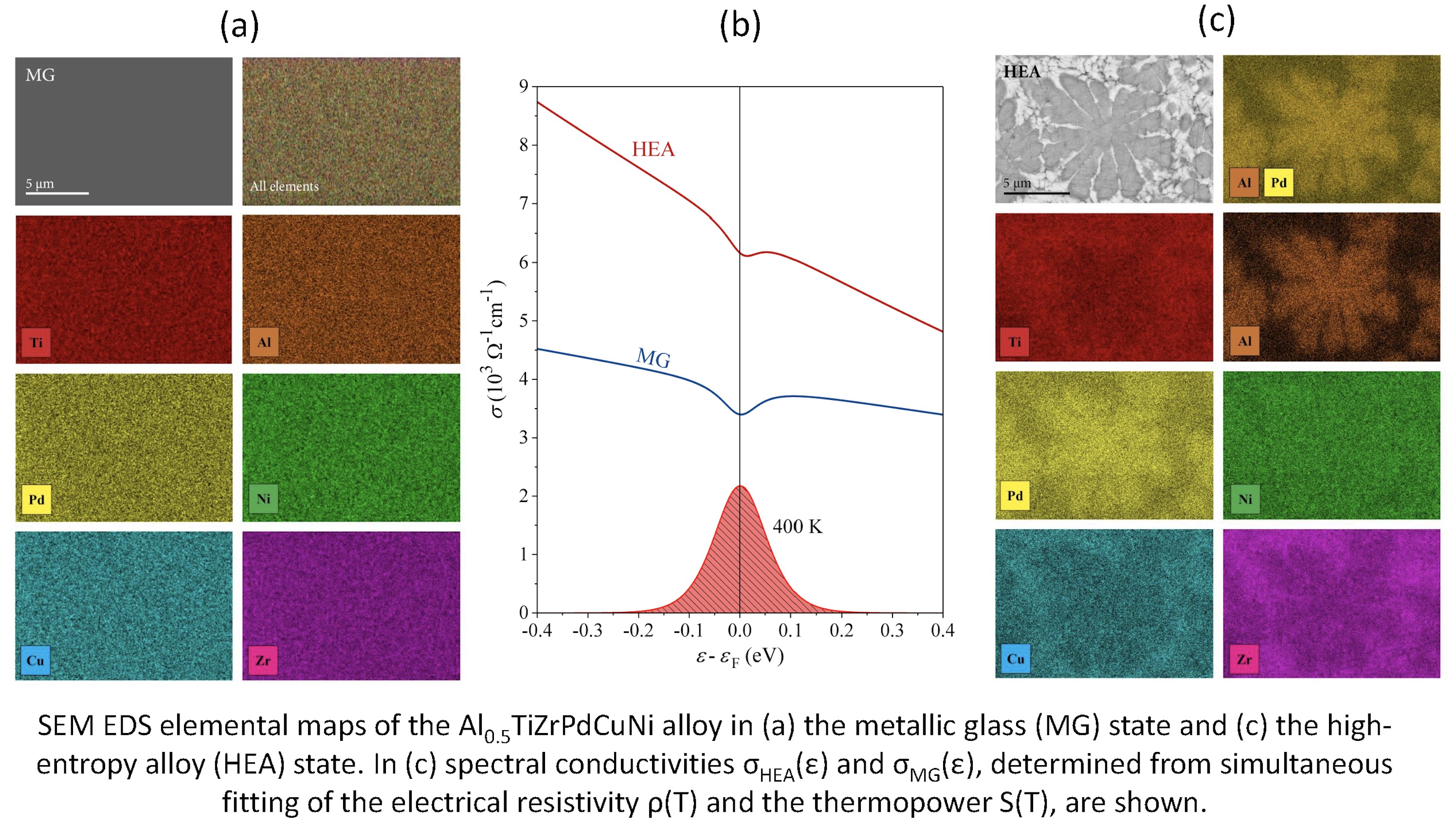Electronic transport properties of the Al0.5TiZrPdCuNi alloy in the high‑entropy alloy and metallic glass forms
- 23
- Feb
- 2022
Electronic transport properties of the Al0.5TiZrPdCuNi alloy in the high‑entropy alloy and metallic glass forms
Magdalena Wencka, Mitja Krnel, Andreja Jelen, Stanislav Vrtnik, Jože Luzar, Primož Koželj, Darja Gačnik, Anton Meden, Qiang Hu, Chaomin Wang, Sheng Guo & Janez Dolinšek
High-entropy alloys (HEAs) are characterized by a simultaneous presence of a crystal lattice and an amorphous-type chemical (substitutional) disorder. In order to unravel the effect of crystal-glass duality on the electronic transport properties of HEAs, we performed a comparative study of the electronic transport coefficients of a 6-component alloy Al0.5TiZrPdCuNi that can be prepared either as a HEA or as a metallic glass (MG) at the same chemical composition. The HEA and the MG states of the Al0.5TiZrPdCuNi alloy both show large, negative-temperature-coefficient resistivity, positive thermopower, positive Hall coefficient and small thermal conductivity. The transport coefficients were reproduced analytically by the spectral conductivity model, using the Kubo-Greenwood formalism. For both modifications of the material (HEA and MG), contribution of phonons to the transport coefficients was found small, so that their temperature dependence originates predominantly from the temperature dependence of the Fermi–Dirac function and the variation of the spectral conductivity and the related electronic density of states with energy within the Fermi-level region. The very similar electronic transport coefficients of the HEA and the MG states point towards essential role of the immense chemical disorder.

Scientific Reports, 12, 10 February 2022, 2271